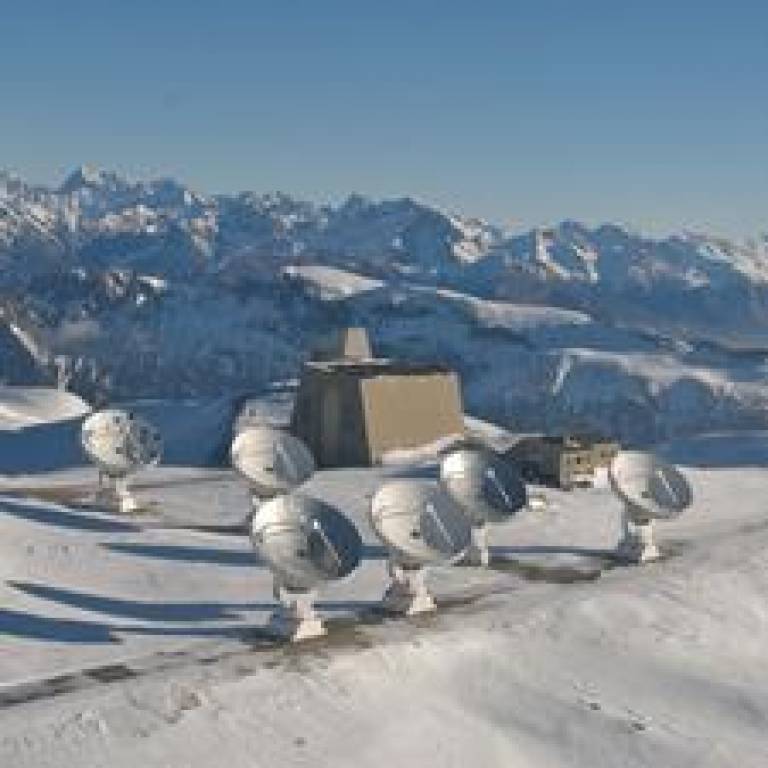Discovery of sugar in outer space may be clue to alien life
25 November 2008
Links:
 star.ucl.ac.uk/~sv/" target="_self">Dr Serena Viti
star.ucl.ac.uk/~sv/" target="_self">Dr Serena Viti
Scientists have detected an organic sugar molecule which is directly linked to the origin of life in a region of our galaxy where habitable planets could exist. The discovery, partly funded by the UK's Science and Technology Facilities Council (STFC), is published on the Astrophysical Journal's website today.
The international team of researchers - which included Dr Serena Viti (UCL Physics & Astronomy), as well as scientists from France, Italy and Spain - detected the molecule using the Institut de RadioAstronomie Millimétrique (IRAM) radio telescope in France, with which the team was observing a massive star-forming region of space some 26,000 light years from Earth with high-angular resolution and at different wavelengths.
Dr Serena Viti, one of the paper's authors, said: "This is an important discovery, as it is the first time glycolaldehyde, a basic sugar, has been detected near a star-forming region where planets that could potentially harbour life may exist."
Glycolaldehyde, the simplest of the monosaccharide sugars, can react with the substance propenal to form ribose, a central constituent of Ribonucleic acid (RNA), thought to be the central molecule in the origin of life. It has previously only been detected near the centre of our galaxy, where conditions are extreme compared to the rest of the galaxy; but its discovery in an area far from the galactic centre (known as 'G31.41+0.31') suggests that the production of this key ingredient for life could be common throughout the galaxy. This is good news in our search for alien life, because a wide spread of the molecule improves the chances of its existing alongside other molecules vital to life, and in regions where Earth-like planets may exist.
Professor Keith Mason, Chief Executive of the STFC, said that "the discovery of an organic sugar molecule in a star-forming region of space is very exciting and will provide incredibly useful information in our search for alien life. Research like this, combined with the vast array of other astronomical projects involving UK researchers, is continually expanding our knowledge of the Universe and keeping the UK at the forefront of astronomy."
|
The STFC The Science and Technology Facilities Council is an independent, non-departmental public body of the Department for Innovation, Universities and Skills (DIUS). Formed in 2007 as a new Research Council through a merger of the Council for the Central Laboratory of the Research Councils (CCLRC) and the Particle Physics and Astronomy Research Council (PPARC), and the transfer of responsibility for nuclear physics from the Engineering and Physical Sciences Research Council (EPSRC), it is one of seven national research councils in the UK. The STFC supports scientists who tackle some of the most fundamental scientific questions, through providing funding and access to world-class facilities, and through providing a broad range of scientific and technical experise in space and ground-based astronomy technologies, microelectronics, wafer scale manufacturing, particle and nuclear physics, alternative energy production, radio communications and radar. The Council also encourages researchers to create new businesses based on their discoveries and help established companies to use the fruits of its research. In 2008-09, it is planning to invest approximately £787 million. |
*Image ©Rebus*
 Close
Close

